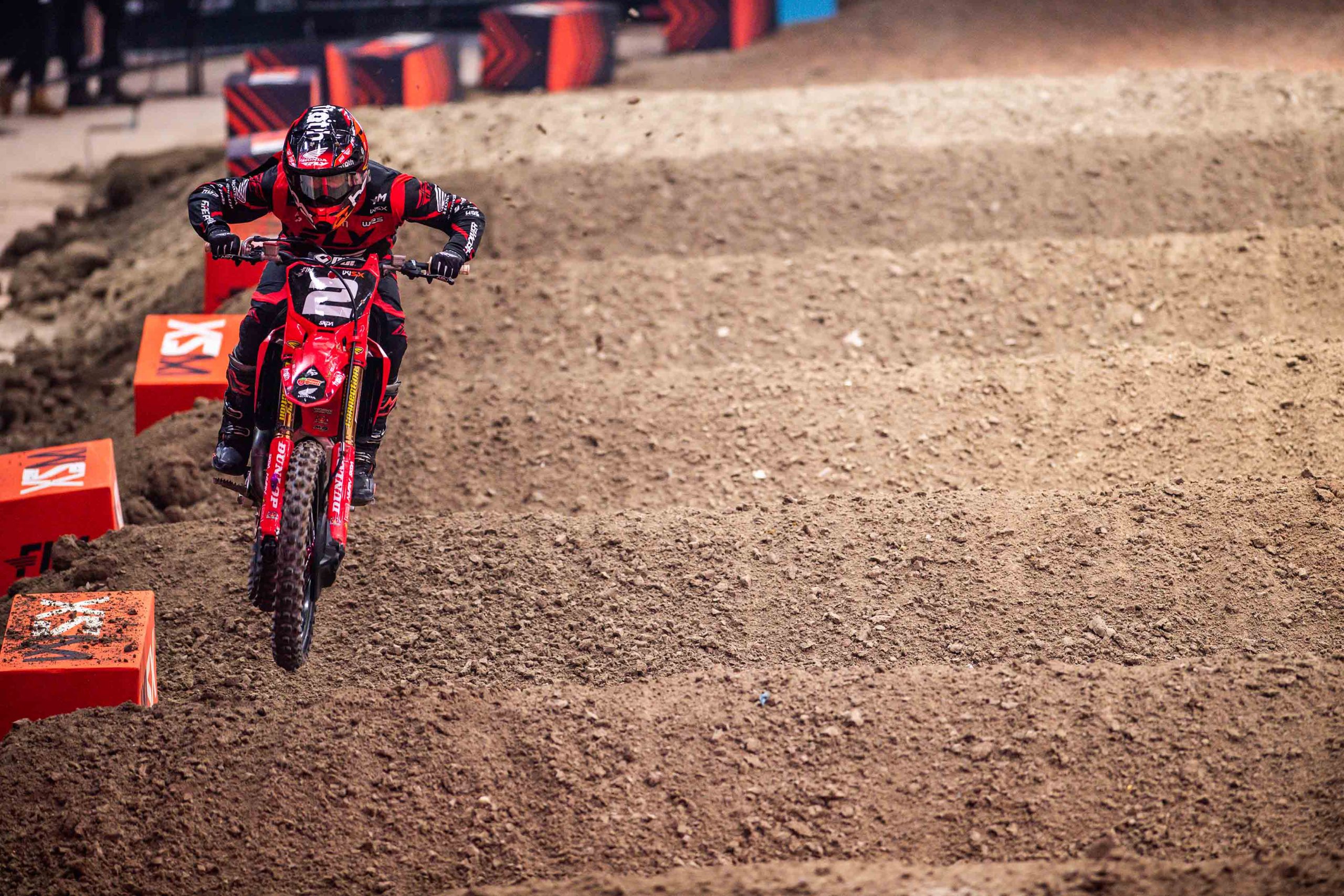
Oscar & Juan Gálvez Racetrack


Ever built a sandcastle? Supercross track constructors don’t have the unlimited resources of a sandy beach, but they do have 600 trucks of dirt to create a racecourse and the open palette of a stadium floor.
The 2025 World Supercross season will see stadiums taken over across the world and filled with dirt to produce the tracks that will form the stage for some thrilling action. So, how do you go about building a track from scratch?
Firstly, the boring bits. The layouts must be constructed with safety at the forefront. This determines the width and trajectory of the jumps to enable space and clearance of any permanent structures. Designers also need to make room for the start gate, open entry to the first corner and allowances for other circuit features like timing posts, marshal spots, storage areas. Drainage has to be considered and with most of the locations exposed to open-air and the threat of bad weather is real.
World Supercross calls on the vast experience of Jetwerx to make the racetracks appear out of nowhere. Based in Canada, and with plenty of mileage in moulding supercross and arenacross circuits, Jetwerx will first visualise a World Supercross ‘stage’ using computer software and will click together the turns, sectors and jumps that will challenge riders and excite fans. Ideas, diagrams and drawings will be approved and signed-off by SX Global, the promoters and Race Directors.
When we go into a stadium that has grass, we have to impact the surface as little as possible, this often means a period of just 72 hours for the whole event!
Supercross traditionally has a ‘whoops’ section – a ‘washboard’ of rolling bumps – switchback turns (180-degree hairpins), a big Finish Line leap and rhythm lanes that can vary in the same stretch. These will be sequences of jumps; singles, double, triples and maybe even a quad. The idea is to forge a layout that has flow, and allows the racers, in either SX2 or SX1, to interpret the best possible lines or combinations for their skills or bravery. The track has to maximise the dimensions to hand therefore it will be narrow in some parts and wider in others with different speed.
Before a World Supercross track can take shape, the original stadium must be prepped. Most of the venues serve as homes for football or rugby teams so the turf has to be covered and protected. This forces a race against time. “When we go into a stadium that has grass, we have to impact the surface as little as possible, this often means a period of just 72 hours for the whole event!” reveals Jetwerx CEO Justin Thompson, a former racer and now team leader with two decades of knowledge on his CV.
“We have to build through the night to make sure we only put the plywood and flooring down for a minimal amount of time. Our logistics also depend on the ‘bandwidth’ the stadium can give us: is it a few days or a week? It varies.”
The clock is ticking once the stadium floor has been transformed and is ready for dirt. The material is critical. “You gotta understand your dirt, your location and how far your trucks are coming,” says Thompson. “Sometimes you need whole traffic plans to get the trucks rolling. In Australia we might have up 100 of them and they are constantly moving. Depending on the size of the truck it can be emptied in just a few minutes.”
“Tracks develop according to soil types, watering and how much moisture the dirt pile contains. A lot goes into that: sometimes we have to water the pile even before we move it into the stadium and colder locations carry their own complications.”
The density and consistency of the earth will determine how well the track can be compacted and sealed and how it will transform with a full practice and night programme of motorcycles tearing through it. It shouldn’t be dry to the point of being dusty while offering good traction and not folding into a sea of limiting ruts and bumps.
You gotta understand your dirt!
A painter is only as good as his brushes. “As well as your equipment; sometimes you have to adjust your build depending on the quality of the machinery. Things that you learn as you go,” Thompson says. Diggers and excavators will be used by a team that can reach up to 50 people on site. These operators will push and flatten the dirt according to the circuit plan, taking special care for the angle and elevation of jump take-offs and landings. The profiles of the obstacles are meticulous, again to assist with consistency and safety so the riders can push to the limit. “We don’t want to have a rhythm section next to a wind outlet of the stadium; small details like these,” Thompson adds.
A track will be completed just in time for press preview coverage. Advertising boards, tuff blocks, lighting positions and other aesthetics are the final touches. The track is a living beast. Machinery will be switched off and parked close by but there will be a need to water it, fix and maintain it and perhaps tweak or remove some areas depending on rider/team feedback or adverse weather.
Once the chequered flag has waved and the fireworks have been extinguished the track crew rush into action again. The temporal feeling of supercross is underlined in this period, sometimes even as the fans are still filtering out of the stadium. Jumps will be rolled over and the whole course flattened. Those tricky sections will disappear and replaced by mounds of earth as Jetwerx scramble to return the stadium to working order. Meanwhile thoughts and dirt preparation already turn to the next race and the next ‘castle’.